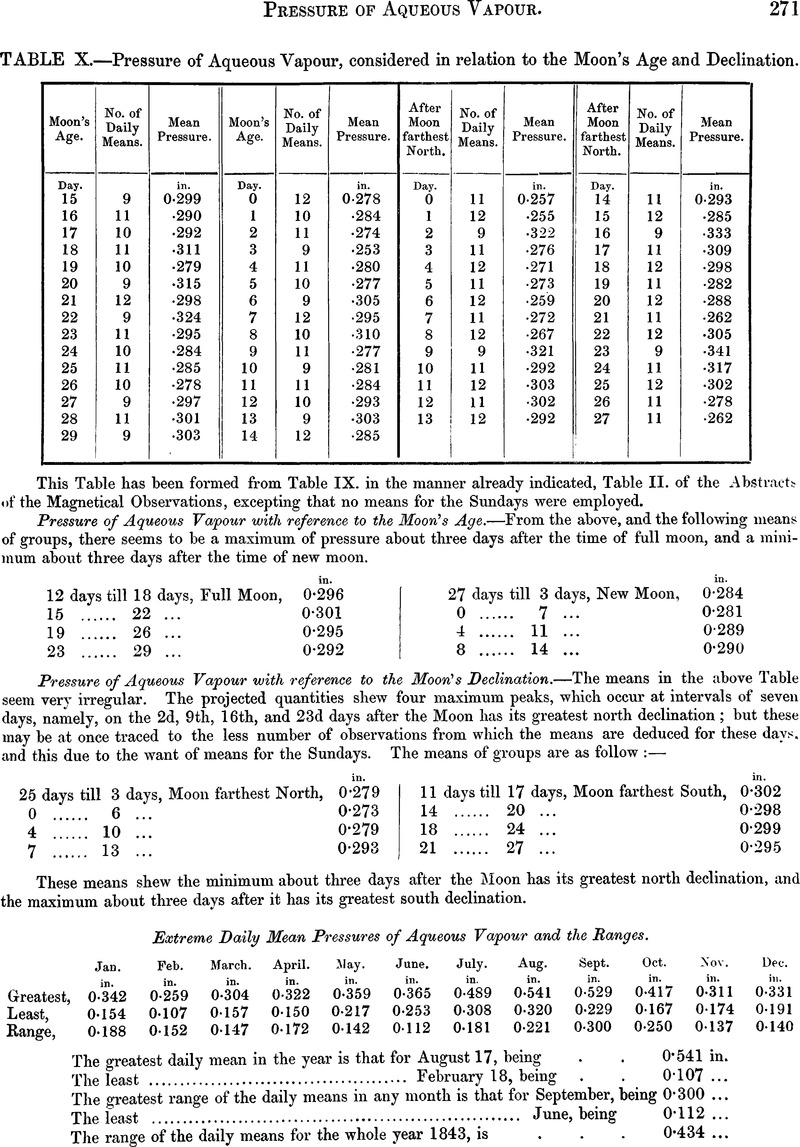No CrossRef data available.
Article contents
Pressure of Aqueous Vapour
Published online by Cambridge University Press: 17 January 2013
Abstract

- Type
- Abstracts of the Results of the Meteorological Observations, made at the observatory of General Sir T. M. Brisbane, Bart., Makerstoun. 1843
- Information
- Copyright
- Copyright © Royal Society of Edinburgh 1847
References
* The afternoon secondary maximum and minimum seemed to me, at first, due to a local cause, namely, the action of the sun on the soil near the thermometers when it approaches the prime vertical, producing in this way an abnormal state of the atmosphere near the thermometers. I have, however, been induced to reject this hypothesis for the following reasons :—With a similar amount of sunshine, a similar action should be visible in the morning, but there is none visible; the effect should be most distinct near midsummer, whereas it is most evident in August and September; it should be as well marked in March, April, and May, but it is not evident at all in these months. The comparative amounts of sunshine for the year 1843 can only be estimated from the observed surface of cloud, and this differs little before 7 A.M. and after 5 P.M., but it is evident that the quantity of vapour may be connected with the surface of cloud by other than local considerations, as will be seen on examination of the tables for the surface of cloud. Finally, the minimum occurs at 1h P.M. in May and October, and at 11h A.M. in April, when the cause supposed could not operate.




